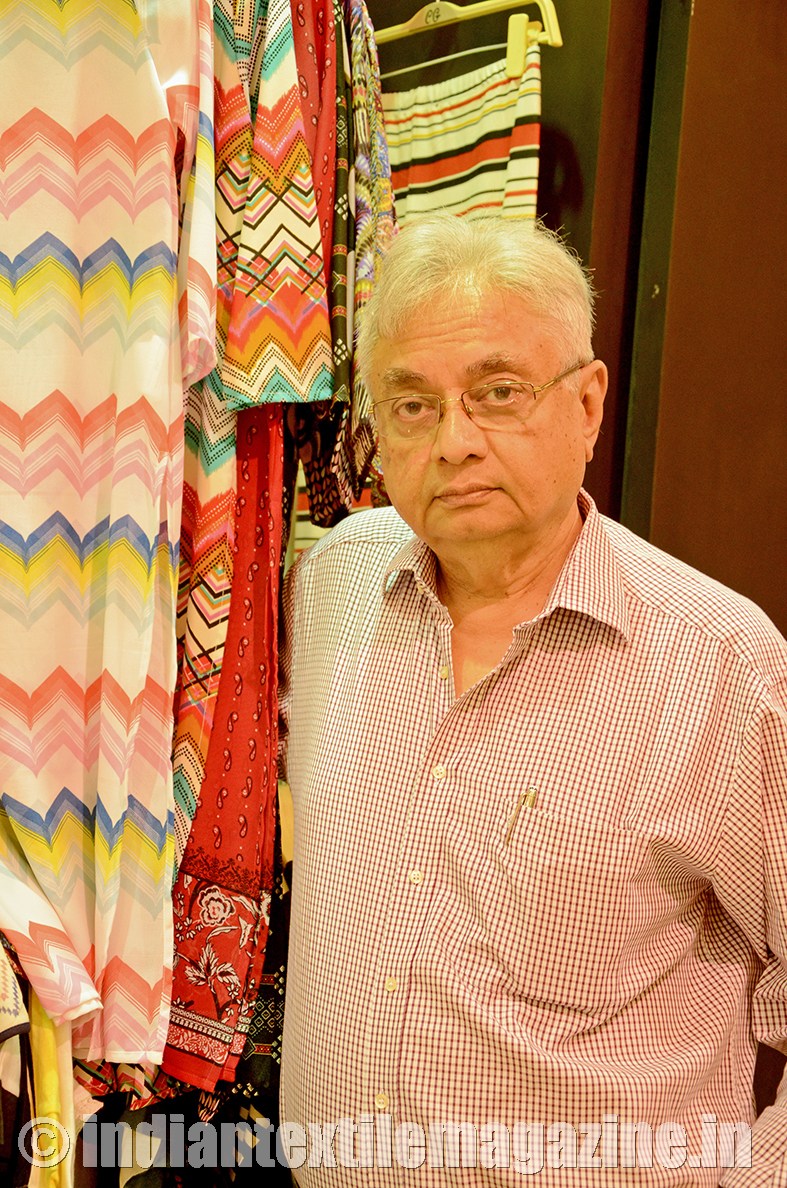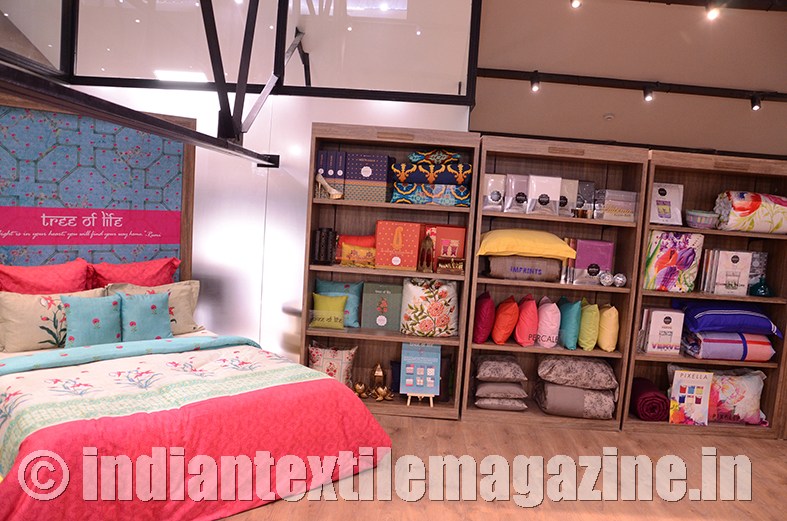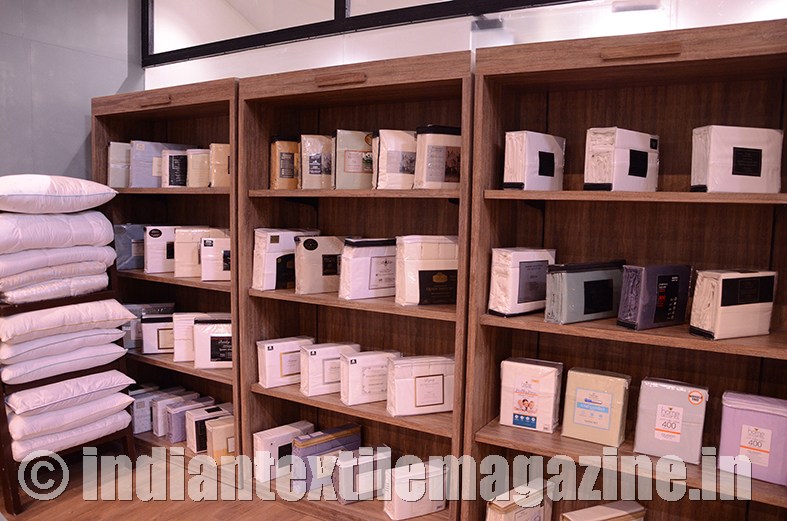The Creative Group is indeed a leading creator and supplier of reliable, cost-efficient and innovative solutions for the textile industry. The company, established by Vijay Agarwal in 1973 on a very small scale with just 10 sewing machines, has now grown to become a global conglomerate. As the initial business grew and started generating good sales and returns, the younger Agarwal brothers – Birendra, Surendra and Shiv – joined in to make the company rise to the great heights that it has reached today.

Mr. Rahul Mehta, serving as the company’s Managing Director of the domestic business, became a part of the company in 1982 when the brand became one of the few pioneer names that brought international brands to the Indian sub-continent. As the group grew in its reach, Mr. Rahul Mehta and Mr. Vijay Agarwal formed a separate company that had its focus solely on the Indian market.
Today the group has millions of consumers worldwide and is generating a yearly turnover of approximately Rs. 1,500 crores with their various verticals in textiles, home textiles, e-commerce and exports. The group has a wide reach, is diversified and spread into various global markets and verticals having fully developed and high-tech production facilities in Bombay, Daman, Vapi, Mangalore and Delhi.
Numerous brands are associated with the Creative Group today. Some of them are 109 F, Fusion Beats and Oxygen (looked after by Birendra and Rahul), solely women’s apparel brands, and Portico (overseen by Vijay Agarwal), a brand that is the name of the Indian home furnishing brand under the Creative Group, and Urban Republic, a Denim wear brand managed by Chippy, Rahul’s son. The group is primarily a garments manufacturer, and Vapi is the only production unit having the facility for home textiles production. The group’s major turnover, however, is generated through exports worth approximately Rs. 1,000 crores.
The Creative Group in its size is a very large entity, and although it is difficult to have a commonality in strength, each of its units has a specific specialization. There is complete commitment to quality, timeline and to integrity of operations. “If we have given a commitment to the buyer, he will have a peaceful sleep knowing that it will be fulfilled. Even when there was severe pressure on the orders we did not cancel a single order”, said Mr. Rahul Mehta.
As the domestic market experiences a boom in demand and opens up in terms of the requirements of the fashion industry, growth in the youth population and changing cultural factors and consumer tastes, the Indian market holds great promise for the group which is looking into expansion and will soon be diversifying into the kids wear range. A steady growth of 10-15% can be expected from the market. With the expansion of e-commerce the market has picked up and will lead to the expected growth rates.
With an employee strength of nearly 9,000 workers, the group has well established itself in the Indian and international markets. The international market expands to the European and Middle Eastern countries with a selling price range of 5 to 70 Euros and a growth rate of 12-15%.
Assisting the original promoters in this drive for growth, is the second generation. Arunanshu and Vishwanshu – Vijay Agarwal’s sons, Chippy – Rahul Mehta’s son, Puneet – Birendra Agarwal’s son-in-law, Abhishek – Surendra Agarwal’s son, and Siddharth – Shiv Agarwal’s son.
Both demonetization and GST had their major impact on the functioning of the Indian market for textiles. A lot of stagnancy could be observed in terms of consumer transactions and even imports. Although the group’s exports were not at all affected, after demonetization business became sluggish and cash transactions constituting approximately 65% of the overall transactions came down to only 35%. The implementation of GST has encircled positive effects for the long run by removal of the grey market currency and did not leave a lasting impact on the organized sector industries except for making them bring modifications in their imports and taxation policies. The Government is actively checking and making modifications in the tax policy to accommodate all the industries facing the negative impact of the policy.
The export market throughout is polyester based, but Indian exports are cotton based and traditional, which is moving towards the man-made fiber sector. The progress is slow due to high prices of artificial fibers manufactured in India. Cotton exports could expand eventually as people realize that polyester is not a rich man’s cloth, as Mr. Rahul Mehta points out. The whole domestic market cycle could reverse in a few years as more and more people leave polyester, which is in the current fiber of the masses and switch to cotton due to its quality, durability and the innovations involved in modifying and making the fabric more affordable.
The garments industry has always seen shifts from more expensive sources of production to comparatively affordable ones and a similar process had made the shift of textile production from countries like the US and the UK to India and China which then moved to Bangladesh and Vietnam and is experiencing a shift now to countries like Myanmar and Africa. A single country cannot keep raising its standard of living and income and expect to keep growing in the labor-intensive textile market. This is one of the reasons why, according to Mr. Rahul Mehta, Indian exports will decline too and the focus of the industry’s sector players will shift from international markets to the domestic market which is to experience a major boom in the coming years.
There are no oncoming major industries in the present time in the Indian market and all the sector players operating in the market are the ones that are well established and fairly competitive. The overall industry will remain healthy and provide decent growth prospects.
The group has achieved tremendous success in every department it has set foot on. The management style has been active at every stage of development. The owners have involved themselves in the day-to-day operations, and the company has been continuously evolving in skill, structure, approach and requirements of the changing market environment.
The company started with sewing as its primary concern but has met today’s demand of having original designs, which according to Mr. Rahul Mehta, is a step that will take the company forward in the direction of expansion and growth and professionalizing its operations. Professional CEOs have become a part of the group and taken over their operations therefore making necessary changes in the company that are required in response to the demands of the changing environment.
The vision further is to become larger in terms of brand space and become a complete wardrobe solutions provider if opportunities arise. An expansion in men’s apparel could be expected, but the presence of the group in children’s clothing is certain in the near future. The group’s aim is to continue meeting the demands of the market environment and the consumers and to rise to greater heights.

